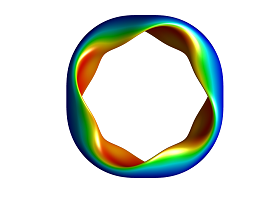- 2.2Impact Factor
- 5.3CiteScore
- 18 daysTime to First Decision
Symmetry in Plasma Physics and Thermonuclear Fusion
Special Issue Information
Dear Colleagues,
After Emmy Noether's deep insight, symmetry has been one of the most basic and prolific concepts in the development of physics in the last century. The conservation properties associated with symmetries are routinely used in plasma physics and thermonuclear controlled fusion, which allows for quite some theoretical simplifications and the design and operation of experimental fusion devices with the desired properties. However, perfect symmetry is rarely found, and doubts arise about the validity of these approaches, and about whether it is possible to find theoretical treatments for quasi-symmetric conditions that aid in the design of experimental confining devices that can provide our society with a safe, clean, abundant, efficient, and reliable energy source for the generations to come.
Prof. Dr. Victor Tribaldos
Guest Editor
Manuscript Submission Information
Manuscripts should be submitted online at www.mdpi.com by registering and logging in to this website. Once you are registered, click here to go to the submission form. Manuscripts can be submitted until the deadline. All submissions that pass pre-check are peer-reviewed. Accepted papers will be published continuously in the journal (as soon as accepted) and will be listed together on the special issue website. Research articles, review articles as well as short communications are invited. For planned papers, a title and short abstract (about 100 words) can be sent to the Editorial Office for announcement on this website.
Submitted manuscripts should not have been published previously, nor be under consideration for publication elsewhere (except conference proceedings papers). All manuscripts are thoroughly refereed through a single-blind peer-review process. A guide for authors and other relevant information for submission of manuscripts is available on the Instructions for Authors page. Symmetry is an international peer-reviewed open access monthly journal published by MDPI.
Please visit the Instructions for Authors page before submitting a manuscript. The Article Processing Charge (APC) for publication in this open access journal is 2400 CHF (Swiss Francs). Submitted papers should be well formatted and use good English. Authors may use MDPI's English editing service prior to publication or during author revisions.
Keywords
- Symmetry
- plasma physics
- thermonuclear fusion
- Quasi-symmetry
- magnetic confinement
- inertial confinement
- Tokamak
- Stellarator

Benefits of Publishing in a Special Issue
- Ease of navigation: Grouping papers by topic helps scholars navigate broad scope journals more efficiently.
- Greater discoverability: Special Issues support the reach and impact of scientific research. Articles in Special Issues are more discoverable and cited more frequently.
- Expansion of research network: Special Issues facilitate connections among authors, fostering scientific collaborations.
- External promotion: Articles in Special Issues are often promoted through the journal's social media, increasing their visibility.
- e-Book format: Special Issues with more than 10 articles can be published as dedicated e-books, ensuring wide and rapid dissemination.

